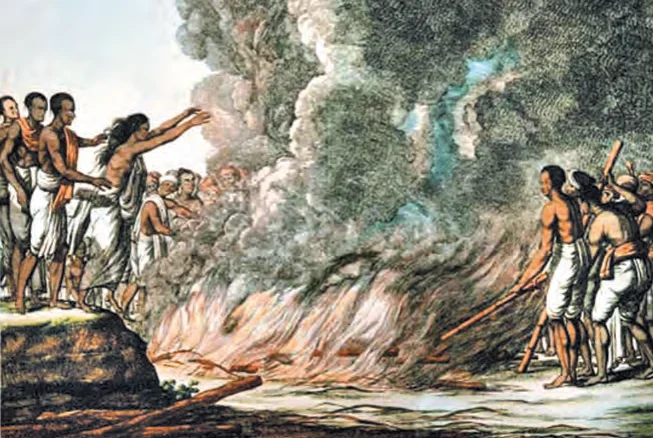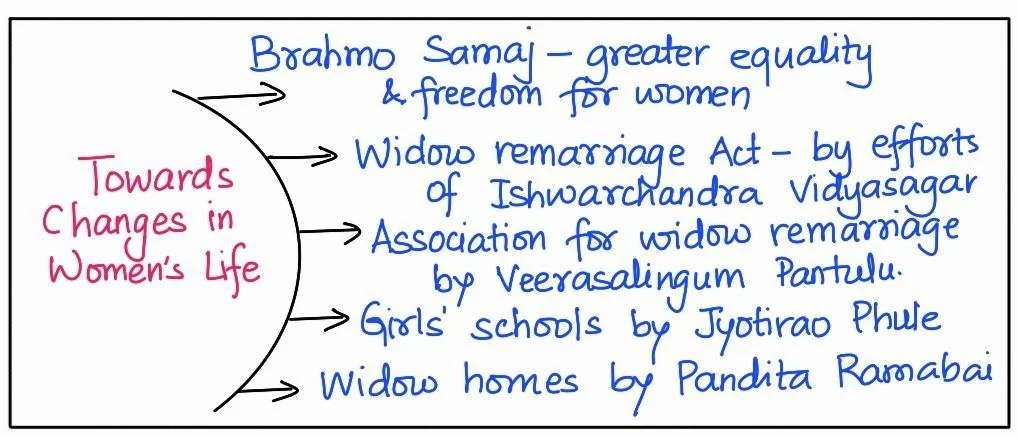![]() 25 Jun 2024
25 Jun 2024
Two hundred years ago, things were quite regressive for women. Child marriage was allowed. Both Hindu and Muslim men could marry more than one wife. In some parts of the country, the practice of sati (meaning virtuous women) was praised. It was believed that if a woman was educated, she would become a widow. Thus, they had no access to education. Women’s rights to property were also restricted.
Printing Revolution: In the early 19th century, social customs and practices took on a new character.


Widow Remarriage
|
| Must Read | |
| Current Affairs | Editorial Analysis |
| Upsc Notes | Upsc Blogs |
| NCERT Notes | Free Main Answer Writing |
Despite societal resistance, the 19th century saw strides in women’s rights. Reformers like Raja Ram Mohan Roy and Ishwarchandra Vidyasagar championed widow remarriage and girls’ education. By the 20th century, women themselves were agents of change, writing, organizing, and demanding equality.
| Related Articles | |
| Lancet Study On Child Marriage In India | BRAHMO SAMAJ |
| Constitutional Development In India: Under East India Company & Under Crown Rule | SOCIAL REFORMERS OF INDIA |
<div class="new-fform">
</div>